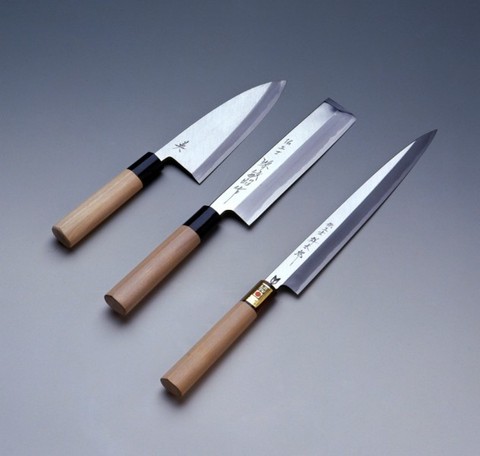
16世紀の中頃、ポルトガル人によって鉄砲、たばこが伝来しました。16世紀の後半には、たばこの葉を刻む「たばこ包丁」が堺で作られるようになり、徳川幕府は堺に「極印」という品質証明の印を与え、専売を許可したために、堺刃物の切れ味と名声は全国各地へと広がりました。
江戸時代中期には、出刃包丁が出現し、その後各種の包丁が作られるようになりました。

Guns and tobacco were introduced into Japan in the middle of the 16th century by the Portuguese. By the end of that century, small tobacco knives were being forged in Sakai and the Tokugawa Shogunate awarded the forgers of Sakai a special seal of approval and guarantee of their quality. Sakai was also granted exclusive selling rights and the reputation of the cutting edge of Sakai forged blades spread throughout the land as a result. Then in the middle of the Edo period (1600-1868), the deba-bocho or pointed knife appeared and was followed by knives of every description, mainly used in the preparation of food.
Japanese cooks have a complete range of kitchen knives for every purpose and most of those are said to have Sakai forged blades. The special feature of these knives is the finely ground edge and point and their reputation is as good as ever. There are now 215 firms employing 1,236 people, among whom 28 are government recognized Master Craftsmen sustaining and leading this craft.